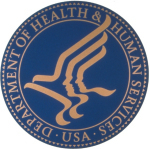
Health security is
in the national interest
The Department of Health and Human Services released the country's first health security strategy, Secretary Kathleen Sebelius, announced.
In an effort to better prepare the country to respond to fast-moving epidemics, natural disasters or terror attacks with biological or radiological weapons, the HHS created a goal-outlining document, The National Health Security Strategy, and an accompanying implementation guide.
These lay the groundwork for developing the actual Implementation Plan, a guidebook for how to ensure the country can prevent, prepare for and respond to emergencies, set to be published this fall and then once every two years.



Ad Statistics
Times Displayed: 136626
Times Visited: 7924 MIT labs, experts in Multi-Vendor component level repair of: MRI Coils, RF amplifiers, Gradient Amplifiers Contrast Media Injectors. System repairs, sub-assembly repairs, component level repairs, refurbish/calibrate. info@mitlabsusa.com/+1 (305) 470-8013
"As we've learned in the response to the 2009 H1N1 pandemic, responsibility for improving our nation's ability to address existing and emerging health threats must be broadly shared by everyone -- governments, communities, families, and individuals," Secretary Sebelius said in a statement.
"The National Health Security Strategy is a call to action for each of us so that every community becomes fully prepared and ready to recover quickly after an emergency."
TOP 10 GOALS
For now, the interim implementation guide and the strategy identify 10 goals to make the country more health-secure. These include everything from discovering, and plugging, gaps in the workforce -- say, a lack of nurses or lab scientists--to ensuring better cooperation among different disciplines. For this, the report cites the One Health Initiative, a joint venture of doctors and veterinarians that, among other efforts, is pioneering cross-species disease surveillance.
Still, the health authorities, required by the Pandemic and All Hazards Preparedness Act to release the preliminary strategy guide last year, have a long way to go in what will be a monumental task.
"[We're] not there yet," Gretchen Michael, from the Office of the Assistant Secretary for Preparedness and Response, tells DOTmed News. But even now, she says there has been progress since the traumatic beginning of last decade, with better coordination and integration of health and emergency services. "Are we more prepared than prior to 911? Absolutely."
SOMEWHAT VAGUE
The strategy is admittedly, at this stage, a little vague, but Michael says that's partly from design. More specific recommendations await the publication of the plan, which will contain concrete, and actionable, suggestions.
But even then, it will have to be loose to adapt to the hugely varying demands and resources of different communities across the country, says Michael.
"If this is going to be a national plan, and that is really how it's designed, it's not going to be very specific, because you don't want to 'cookie-cutter' everything," she explains.
And by it's very nature, the subject is large and slippery, encompassing a lot more than just the ability of the Centers for Disease Control to track emerging illnesses.
"One of the things we have to look at is, what is health security?" says Michael. The initial report suggests than preparedness ought to include tackling health-threatening environmental issues and working toward making the population healthier, and thus better able to withstand emergencies.
"You have to look at what's the baseline of the population you're dealing with," Michael says. "If somebody's injured in some kind of event, obviously [it's better] if they're a healthier population to begin with."

